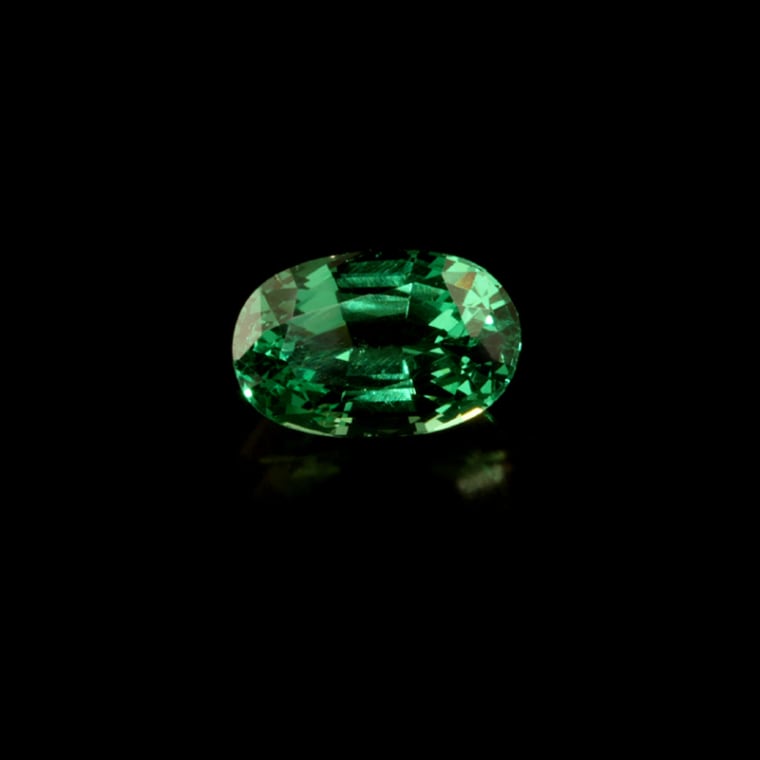There are emeralds in the underneath the land of Colombia. There are opals in the ground in Australia. There is turquoise in the American Southwest. There is, of course, tanzanite in Tanzania, as well as the shiny green tsavorite garnet found only in Tanzania and Kenya. There are rubies in Kenya (and Myanmar, and also Vietnam). There is gold in South Africa, where, as you might know, there are also some diamonds — though not as many as in Botswana and Russia, according to the CIA world fact book.
Indeed, there is a luxuriant abundance of rocks and metals in the ground in Africa. “Stick a stake in the ground in, say, Ratnapura, Sri Lanka, and you will find gemstones,” says Ya’akov Almor, Joint Director of Communications at the World Jewellery Confederation, with a dash of hyperbole.
Almor is quick to point out, though, that where the world’s rarest jewels may be found is often not the best place to purchase them. We gathered a panel of experts to identify the glittery route from deep pockets in the earth to the necks, fingers and wrists of jewelry lovers everywhere.
The most important single thing to remember about buying jewelry abroad is to spot the fakes, Almor says, because virtually every gem and metal worth anything can be synthesized perfectly. “It can be totally impossible to tell the difference,” he warned.
New Haven, Conn.-based pediatrician Jonathan Miller got quite a surprise when he attempted to buy a tanzanite gem for an engagement ring while visiting Tanzania. When Dr. Miller asked his Mount Kilimanjaro tour guide how to buy tanzanite, the guide promptly offered to bring a seller to Miller’s hotel. “I thought it would be more expensive in a store,” Miller says.
The jeweler turned out to be an older gentleman with a padded briefcase containing gems he was willing to sell for $150 apiece. Miller suspected he might be getting taken, so he suggested they take a stone to an appraiser together. The jeweler refused, but offered to let Miller give him $100 at that moment, then recoup the remaining $50 after a successful appraisal. The doctor declined.
Almor offers simple advice: “Go to a store that looks like a store, with a proper showcase, that is well-kept and well-organized, with accreditation signs,” he said. “It is a good sign if they take credit cards.”
To avoid the doctor’s dilemma, only buy gems and metals that are certified by an internationally recognized institution, such as the Gemological Institute of America, says Jeffrey Christian, author of Commodities Rising and a leading expert on international commodities markets. “The institutes will give you a certification of quality, cut and impurities — and the origin of it.” This way, Christian says, you will have a more precise record of your purchase.
Nevertheless, going straight to the source — the gem mine — can be a singular experience as well as a unique opportunity to rub shoulders with industry professionals and gemology bigwigs.
The International Colored Gem Association arranges tours of tanzanite mines in Tanzania, Kenya for rubies and tsavorite, Colombia for emerald, and wherever the market takes them.
“We choose mines based on new discoveries of gemstones, current market trends, or if a certain gemstone seems more popular at the time,” said Barbara Wheat, Executive Director at the International Colored Gem Association.
The tours are for organization members, gemologists, geologists, journalists, jewelers, collectors and buyers, so you will perpetually be surrounded by a cocoon of experts should you require any buying assistance (or appraisals).
The tours, which can accommodate anywhere from 15 to 40 people, include full itineraries: mine and market visits, “welcome cocktails” with chances to meet dignitaries in the field and local community, activities like game drives and “typical miner’s breakfasts,” and free time to shop and relax.
If a full tour doesn’t fit your schedule, contact the mine directly. Many of them offer personal tours of mines and will guide you in your purchasing. For diamonds, the best place to buy today may be Israel, where the gems often arrive from India and Africa, according to Zed Mervis, owner of Mervis Diamond Imports. While overcharging is common, ask around to find places where both designers and wholesalers offer their wares to individual consumers.
As a currency, every country in the world wants to have and sell gold. So do individuals. Duvall O’Steen, Director of Jewelry Public Relations and Promotions at World Gold Council in New York City, offers the following laundry list: In India, go to the Zaveri Bazaar in Mumbai; in Hong Kong, Nathan Road; in Paris, Avenue Montaigne; in Beijing, the Caibai department store; in London, Hatton Garden; in Italy, Via Montenapoleone in Milan; in Japan, Ginza Tanaka in Tokyo. And, for the most expensive and widest selection, there is the Gold Souk in Dubai and the Grand Bazaar in Istanbul.
No account of jewelry imports would be complete without mention of India, where a large percentage of the world’s jewelry is made. Most of the rare and precious jewels in India come from the northwestern state of Rajasthan, but buying in India can be tricky.
Govind Rathore, a Rajasthan native and jewelry enthusiast, says that the best way to buy an expensive and important piece of jewelry is through an individual seller — specifically a goldsmith — who can work with you to create exactly what you want.
